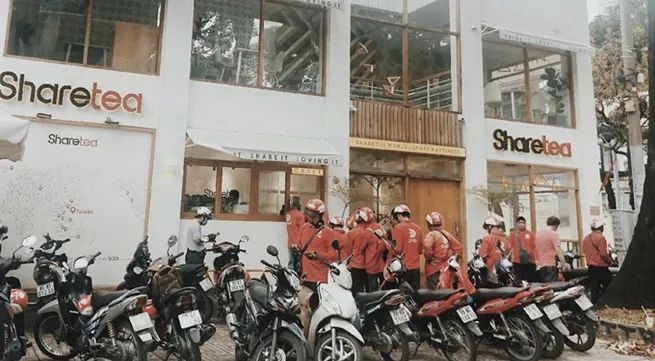Food delivery services poised for boom in Vietnam


|
| GO-VIET’s shippers waiting at a beverage shops to ship beverage to customers. The online-to-offline food delivery service is booming in Việt Nam. |
HCM CITY – Online-to-offline (O2O) food delivery services are expected to grow rapidly, making them red hot in the market and attract investment from many Vietnamese and foreign investors, companies said.
They have been growing strongly in Việt Nam in the last year or so with many mobile apps and websites offering these services, allowing consumers to place orders.
The big players now are Now, Lala, Vietnamm, Lixi, Loship, GO-VIET’s GO-FOOD, and Grab’s GrabFood.
Explaining how the service works, a provider said: “All kinds of local delights are delivered from large restaurant chains to small mom-and-pop stalls.”
When customers make an order, the apps automatically detect their locations to make recommendations of restaurants nearby. A shipper will then be chosen to deliver the foods to the consumer.
Consumers can then track the real-time location of the driver in the app
A GrabFood Việt Nam spokesperson told Việt Nam News: “Food delivery in Việt Nam is booming. With an estimated value of US$33 million in 2018 and an average growth rate of 11 per cent per year, according to data from Euromonitor, of course the market is fiercely competitive.
“Based on Grab’s user research, a majority of Vietnamese consumers are excited to try new things and will choose a food delivery platform that offers the most dependable service providing the widest range of food offerings with best value-for-money and fastest speed of delivery.”
Talking about the potential of Vietnamese market, Nguyễn Vũ Đức, co-founder and CEO of GO-VIET, told Việt Nam News, “The market is promising.”
In Southeast Asia, bikes are the main mode of transport and the basis for the O2O food-delivery service to develop, according to Đức.
Furthermore, the quality of life and consumption habits of Vietnamese consumers have changed in recent years.
“People are busier, meaning there is greater need for saving time and they will seek technology solutions [for it].”
One more reason for the development of O2O food delivery services is the diverse Vietnamese cuisine ranging from street foods to luxury restaurants.
“The market will achieve robust growth in the next two years,” he said
All the food delivery companies reportedly get tens of thousands of orders daily and thousands of restaurants are partnering them.
GrabFood said recently it has a presence in 15 provinces and cities seven months after coming to the country.
“The on-demand food delivery industry in Việt Nam remains highly competitive. An increasingly digital-savvy and well-educated population as well as a digitally ready driver pool make the market promising.”
Since its launch in HCM City in June 2018 GrabFood’s orders have increased 25 fold and it is the fastest-growing food delivery service.
GO-VIET said 2018 was a successful year for it.
“Since the launch in September, nearly four million downloads have been recorded. Every week, dozen millions of orders are placed in HCM City.”
Đức said over five months of operations his company had received strong support.
The entry of two giant players indicates there is still a lot of room for the segment to develop.
The huge number of motorbikes and human resources are also important factors, experts say. — LV
Tags:





